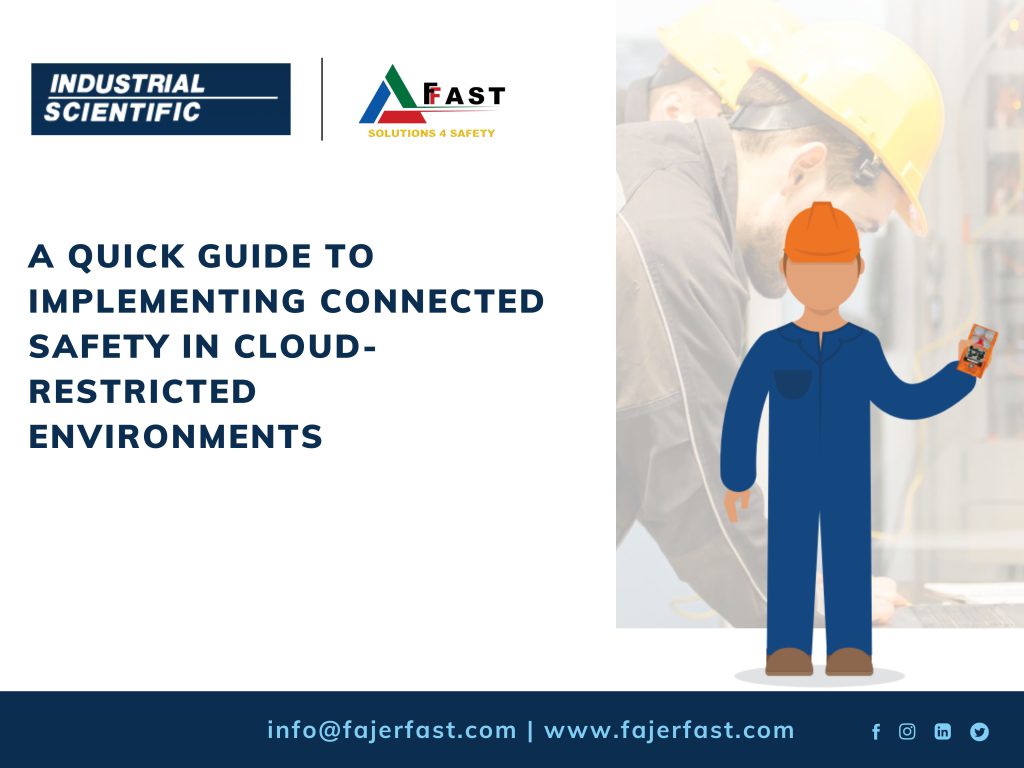Connected Safety from Industrial Scientific is all about providing flexible gas detection and real-time monitoring solutions designed to go where the work is. This blog post will break down the key points of building your connected safety program without the jargon and complexity. We will also discuss how connected safety can be implemented in cloud-restricted environments.
1. The Era of “Islands of Safety” is Over
For ages, safety measures at workplaces were like isolated islands. Gas detection, protective gear (PPE), and other safety solutions operated independently. They didn’t talk to each other, and that was a problem. But guess what? Technology has fixed it.
2. Enter Connected Safety
Connected safety is the superhero that brings all these safety islands together. It’s about using technology to create a seamless safety environment. It’s not about eliminating all risks (we wish!), but it’s about giving you real-time insights into dangers that can harm employees and impact your business.
3. Understanding Connected Safety Components
Connected safety programs are built on three main things:
a. Hardware and Equipment
This is where it all begins. You need the right tools, like gas detectors. But these aren’t your grandma’s detectors. They not only watch over workers but also keep an eye on the surroundings. Personal gas detectors and area monitors are part of this kit. They need to talk to each other and share data, even in real-time.
b. Connectivity
You’ll need a way for these devices to communicate. Think of it as their secret language. You can use things like wi-fi, cellular networks, or even peer-to-peer (mesh) networks. Mesh networks are cool; they’re reliable and work even if some devices drop out. Choose the one that suits your location and needs.
c. Management Software
This is where the magic happens. Management software like iNet® Control is your command center. It helps you track everything – worker safety, equipment, and potential hazards. No more paperwork hassles. Live monitoring software, like iNet® Now, takes it up a notch by sending you instant alerts when danger strikes. It’s like a superhero alert system for your workplace.
Implementing gas detection technology like iNet solutions in a region with cloud restriction can still provide significant safety and operational benefits while addressing cloud-related concerns. Here’s how:
- On-Premises Deployment: To work within cloud restrictions, companies can opt for on-premises deployment of the iNet software solutions. This means the software and data are hosted and managed locally within the organization’s infrastructure, rather than relying on external cloud services. This approach ensures that sensitive data stays within the organization’s control.
- Private Cloud: Another option is to establish a private cloud environment that complies with the country’s regulations. This allows organizations to retain control over their data while still benefiting from cloud-based services. The data can be stored and processed within the country, meeting local compliance requirements.
- Hybrid Solutions: Companies can adopt a hybrid approach, combining on-premises and cloud-based solutions as needed. They can use on-premises solutions for critical data and processes while leveraging cloud resources for less sensitive tasks. This approach balances security and scalability.
- Localized Support: Collaborate with technology providers that understand the local regulatory landscape and can offer solutions tailored to country’s specific cloud restrictions. They can provide guidance on compliance and data sovereignty.
- Data Encryption and Security: Regardless of the deployment method, robust data encryption and security measures should be implemented to protect sensitive information. This ensures that even if data is transmitted or stored in the cloud, it remains secure and compliant with regulations.
- Access Control: Implement strict access controls and authentication mechanisms to restrict access to sensitive data. Only authorized personnel should have access to critical gas detection data.
- Local Expertise: Collaborate with local experts and consultants who understand the nuances of working within country’s regulatory environment. They can provide guidance on compliance, data privacy, and best practices.
While cloud restrictions especially in critical sectors like oil and gas, may pose challenges, it’s still possible to leverage gas detection technology like iNet solutions by adopting a thoughtful and compliant approach. This involves deploying the technology on-premises or within a private cloud, focusing on data security, and working closely with local experts to ensure regulatory compliance while reaping the safety and operational benefits of such systems.
Feel free to get in touch with us to discover how the world of connected safety can be seamlessly integrated into your premises. By doing so, you’ll unlock a multitude of benefits, including substantial cost savings, increased worker safety, improved morale, and hassle-free compliance with regulations, all while steering clear of potential fines. We’re here to guide you on this transformative journey. Your safety and success are our priorities. Contact us now to explore a safer, more efficient future.
